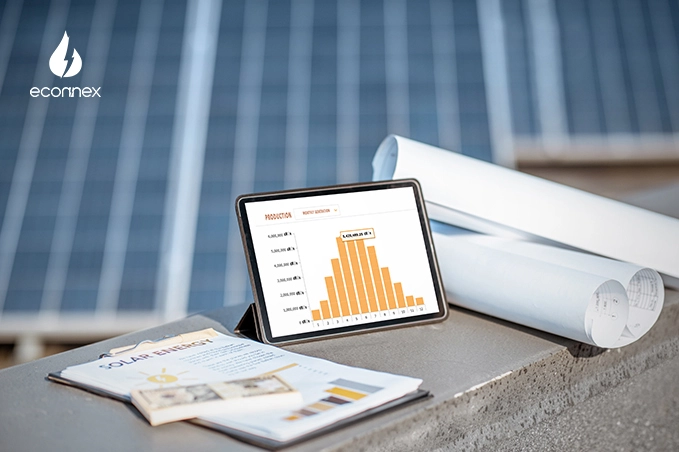Let's see how these conditions have a significant impact on the billing structure of energy, household consumption, and potentially long-term savings on consumers' sides.

Published on 01/12/2024
By Pallav Verma
Energy Comparison
Mild conditions are a part of weather, and it seems to considerably impact your energy consumption. So, let's see how these conditions have a significant impact on the billing structure of energy, household consumption, and potentially long-term savings on consumers' sides.
Milder weather conditions, such as cooler summers or warmer winters, often lead to reduced energy usage for heating and cooling purposes. During periods of milder temperatures:
Reduced Heating and Cooling Needs: Households use less energy to maintain comfortable indoor temperatures. This reduction in energy consumption can significantly impact your monthly bill, particularly in regions where heating or air conditioning is a primary expense.
Stable Energy Prices: Milder weather contributes to more stable energy prices due to low demand across the grid. This means fewer price spikes and more predictable bills for consumers.
Seasonal changes refer to changes that occur due to seasonal patterns of weather. If the winter is milder,
Lower Heating Bills: Less frequent use of heating systems results in households potentially spending less on electricity or gas. This is particularly applicable in areas that are heavily dependent on electric heating or space heaters.
Less Peak Loads: Energy grids have fewer peak load hours without extreme cold snaps, so it does not put as much stress on the system and potentially avoids emergency energy measures.
During cooler-than-average summers:
The consumption of air conditioning units is significantly lowered by the relatively easier summer, which means a reduced amount of energy while these units are in operation. Households thus attain fewer hours of electricity consumption and most significantly those during the peak time when cooling demand usually peaks.
Reduced Expenses: The means for the energy providers is lessened as they do not have to resort to more expensive generation of energy; this helps in stabilizing the prices.
There are various aspects to the relationship between milder weather and wholesale energy prices:
Lower Demand Leads to Lower Prices in Wholesale Rates: In most instances, milder weather conditions prompt a reduction in wholesale energy prices. By reducing the strain put on energy supply and production chains, prices become more predictable.
Energy Providers' Cost Adjustments: The companies would be able to better manage their fuel and operating costs, resulting in potential savings of either or not that would eventually be reflected in consumer prices.
Areas with relatively warmer winters have recorded significant reductions in heating expenses. For example, in 2023, some regions of Australia witnessed an exceptionally warm winter, resulting in a drop of house gas and electricity consumption. The case study on milder weather conditions was seen to break the financial pressure on homes.
Source: Phys.org - Australia's warm winter reduces energy consumption
Mild weather carries long-term implications than cost saving on immediate energy bills:
Deferred Infrastructure Stress: The demand for energy is low during mild weather, thus providing less wear and tear on the infrastructure of the grid. Eventually, in the long run, it may result in lower maintenance costs.
Changing Investment: Once the demand for peaking energy decreases, energy producers will begin to explore more environment-friendly yet cost-effective ways of producing energy thereby stabilizing the market further.
1. Energy Usage Monitoring: Even during milder conditions, energy consumption must be monitored closely. Heating and cooling systems should be adjusted to maximize the use of natural temperature and prevent unnecessary energy consumption.
2. Energy Efficiency Measures: Some measures may include enhanced insulation, energy-efficient windows, and regular checkup maintenance on heating and cooling systems to maximize savings.
3. Flexible energy plans: There are some utilities that provide their users with plans where the price differs from day to day, since it depends on the levels of usage in certain peak times. Take advantage of such plans if they charge lower according to milder weather for most of the time.
Competitive Rates: Search through electricity provider comparison website and find the best plan that is prepared for your personal power usage.
Bundle and Save: This type of plan offers savings or discounted offers during low usage periods during off-peak seasons.
4. Use of Solar Power: Better weather does not mean no sun in sunny areas. Households who have installed solar panels can benefit from this time of the year when sufficient sunlight is provided for them to generate and store energy without much consumption from the grid.
But with milder weather conditions comes an opportunity for households to cut energy bills through reduced consumption and stable energy prices. Additionally, lower stress and manageable demand help energy providers and infrastructure. However, consumers may take this chance by adopting an energy-efficient way of living and choosing energy plans that are suitable.
Get ideal energy deals from our wide panel of retailers with Electricity Provider. Explore in-depth comparisons and discover exclusive savings opportunities for your needs.
Also, read: QLD Government Energy Efficient Appliance Rebate




